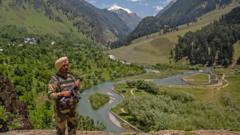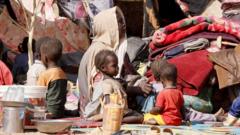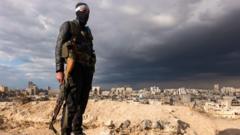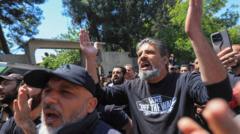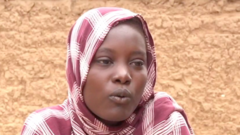Amidst a troubling surge of violence, the once-familiar streets of Baniyas have become haunting scenes of devastation. The massacre of over 1,600 civilians illustrates the failure of the new government to maintain order and protect its people.
Bloodshed Returns to Baniyas: A City Gripped by Violence

Bloodshed Returns to Baniyas: A City Gripped by Violence
Recent attacks in Baniyas, Syria expose the ongoing fragility of peace and the backlash of unresolved sectarian tensions.
The serenity that many hoped would follow Syria's civil war is yet to manifest, as a resurgence of violence has unsettled the coastal city of Baniyas. Early March saw a brutal sectarian attack orchestrated by gangs that left more than 1,600 civilians dead, primarily from the Alawite minority, illuminating the persistent scars of ongoing conflict and the fragile state of governance.
Streets that once bustled with life now lie in ruin, punctuated by the remains of burned vehicles and vandalized shops. An emergency crew has converted a looted furniture shop into a provisional morgue, teeming with body bags that chronicle the violence of just a few days. The grim toll continued to rise as residents reported dozens of bodies strewn throughout the area, with anguished cries for assistance echoing in the hollowed streets.
Reports indicate that the violence unfolded over a mere three days as armed groups ambushed neighborhoods, executing civilians and engaging in a terror campaign that authorities seem ill-equipped to stop. Despite the hopes pinned on a new, rebel-led government, its inability to safeguard vulnerable groups like the Alawites reveals a concerning trend of instability and strife.
Local witnesses recounted harrowing tales of gunmen forcefully intruding into homes, unleashing chaos and fear reminiscent of the civil war's darkest days. The alarming escalation has prompted communities to question their safety and the ongoing struggle for control and reconciliation.
In this tense environment, the residents of Baniyas grapple not only with the aftermath of violence but also with a deeper, unresolved sectarian rift that poses a continued threat to peace and stability in the region. As healing attempts at rebuilding a semblance of normalcy are underway, the specter of mistrust and enmity hangs heavily over the city.
Streets that once bustled with life now lie in ruin, punctuated by the remains of burned vehicles and vandalized shops. An emergency crew has converted a looted furniture shop into a provisional morgue, teeming with body bags that chronicle the violence of just a few days. The grim toll continued to rise as residents reported dozens of bodies strewn throughout the area, with anguished cries for assistance echoing in the hollowed streets.
Reports indicate that the violence unfolded over a mere three days as armed groups ambushed neighborhoods, executing civilians and engaging in a terror campaign that authorities seem ill-equipped to stop. Despite the hopes pinned on a new, rebel-led government, its inability to safeguard vulnerable groups like the Alawites reveals a concerning trend of instability and strife.
Local witnesses recounted harrowing tales of gunmen forcefully intruding into homes, unleashing chaos and fear reminiscent of the civil war's darkest days. The alarming escalation has prompted communities to question their safety and the ongoing struggle for control and reconciliation.
In this tense environment, the residents of Baniyas grapple not only with the aftermath of violence but also with a deeper, unresolved sectarian rift that poses a continued threat to peace and stability in the region. As healing attempts at rebuilding a semblance of normalcy are underway, the specter of mistrust and enmity hangs heavily over the city.


